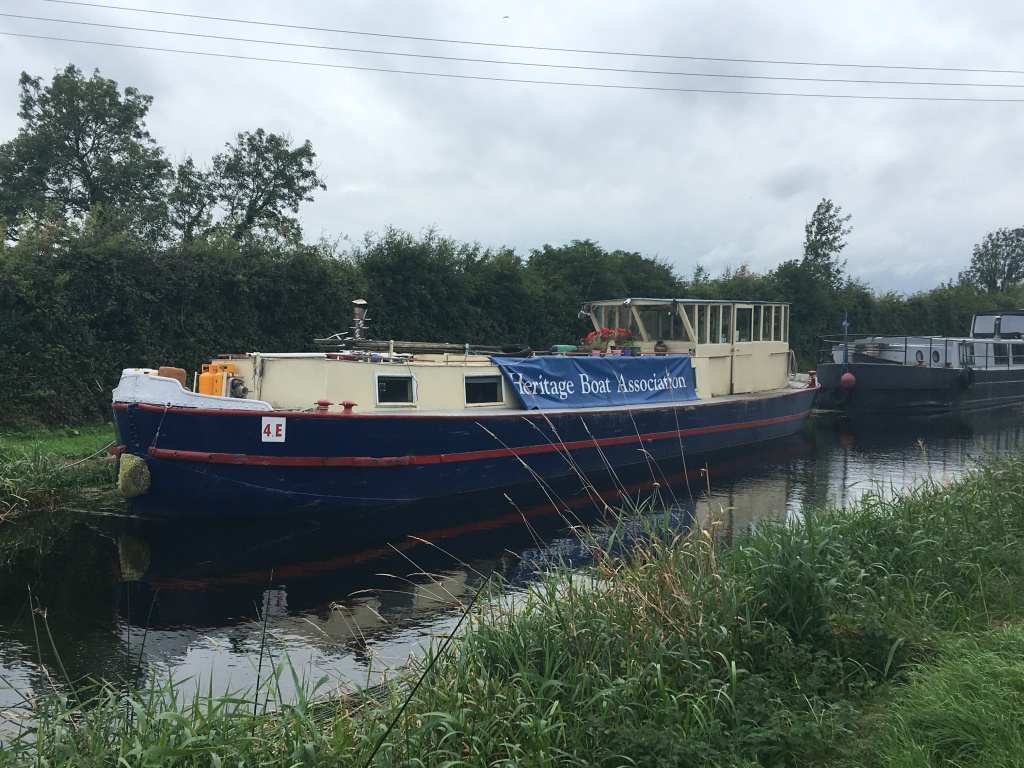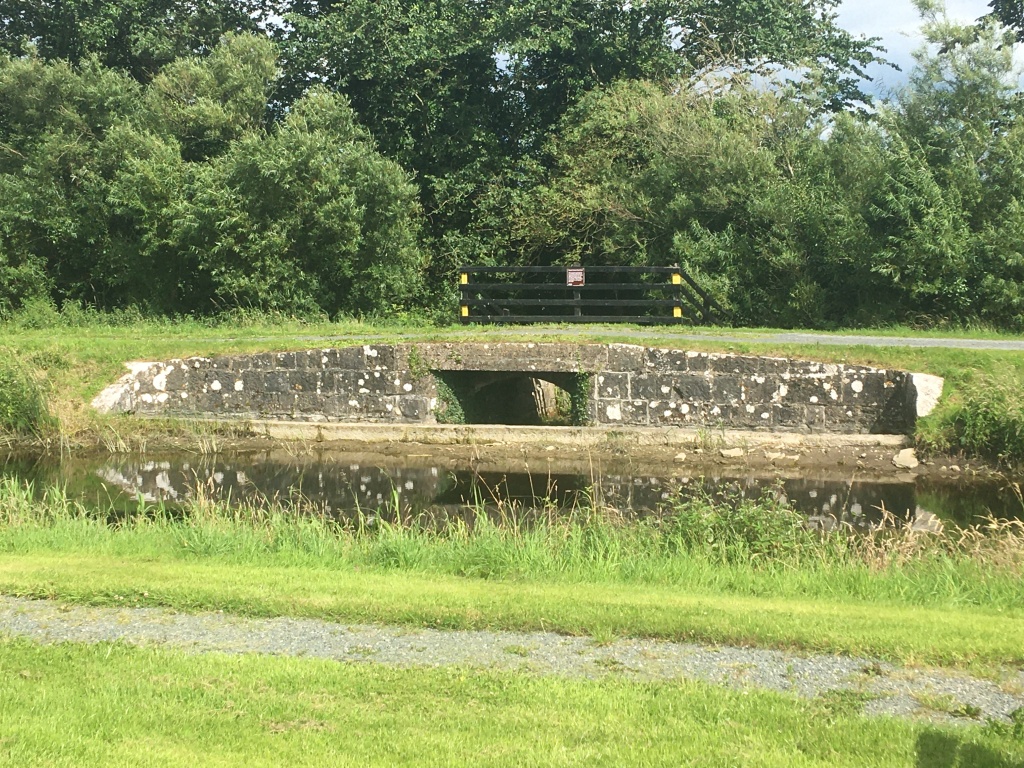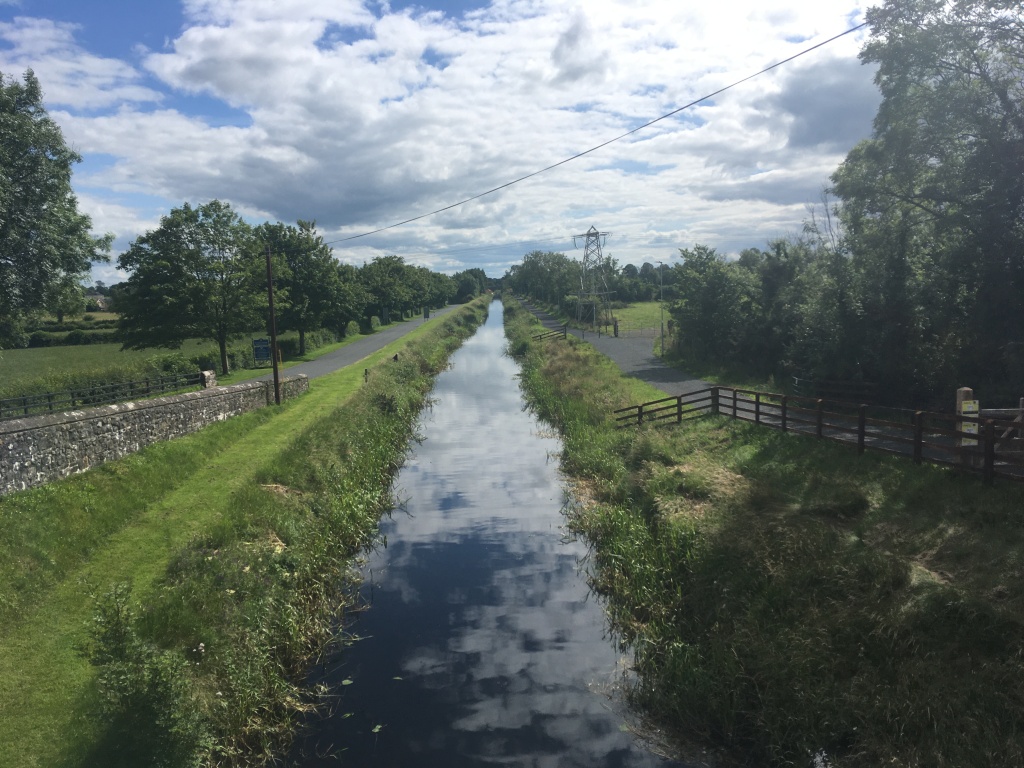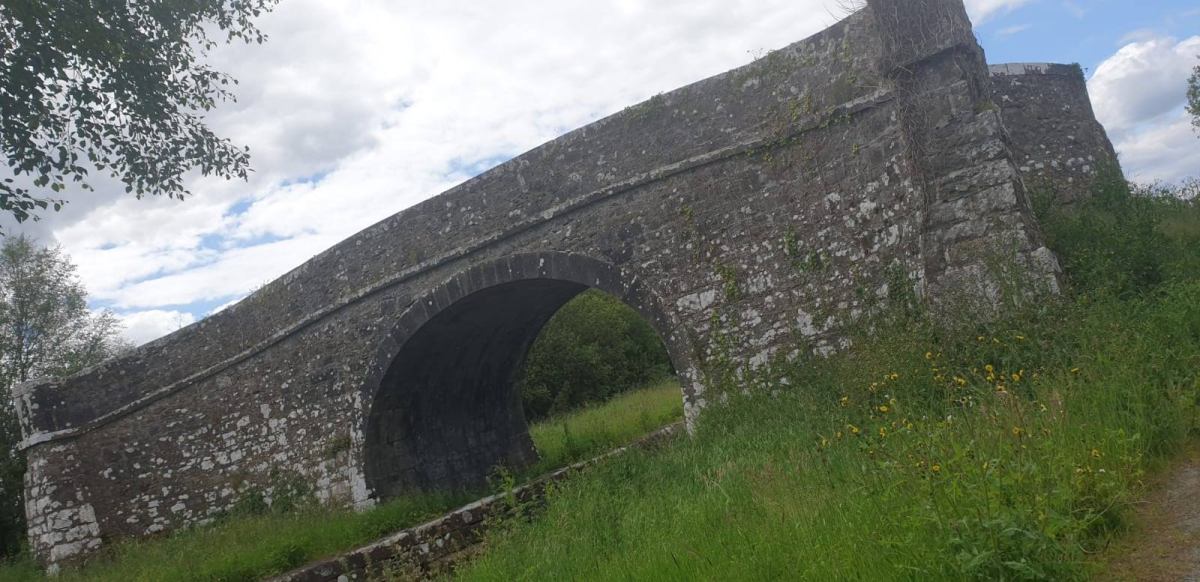Distance: 8.8km
Keeping the sections short as I travel further west towards the Shannon, todays post covers the stretch from Ballynacargy to Abbeyshrule, an easy place to start, enjoy some time on the canal before having a good lunch and returning back the way you came.

Leaving your vehicle in Ballynacargy village, much of which dates back to the time the canal was built, you will need to cross over Ballynacargy Bridge to join the greenway on the south bank of the canal. From here it is 1.5km to the 36th Lock and Bridge with adjacent former Lock Keeper’s Cottage which is now a private residence.

It is a little over 500m from the 36th Lock to Kiddy’s Bridge which you can pass under the arch if you want.

Staying on the south bank of the canal it is then 600m to the 37th Lock and Bridge.

Once down onto the 37th Level you will see the 38th Lock with it’s Lock Keeper’s Cottage and Kelly’s Bridge only a short distance ahead. It is more common to find this matching set of lock, cottage and bridge on the western end of the canal, though the condition of the cottages can vary from ruins, to restored and also extended private residences.

This whole section of the canal was dammed off west of Mullingar from the 1960’s until the 1990s’s with very little to water to speak of. As such some boats were abandoned where they lay. Once such boat is Heritage Boat 4E which is well worth looking up on the link. The boat has had an interesting life with several designations but it was from here that the current owner salvaged her in 1980 by having her towed to the 38th Lock and craned out so it could be brought to the Grand Canal to be restored. 4E can often be sighted on both canals and wintered in Mullingar Harbour over 2019/2020.

We cross over the bridge at the 38th Lock to the north bank before proceeding on 500m to Ledwith’s Bridge. From here the countryside opens up as we pass through Ballymaglavy Bog. The wide expanse of the bog offers no protection so always be prepared for Irish weather, sunscreen and a rain jacket.

As we move through the last stretch out of Westmeath before we enter our final county of Longford we come to a landmark that catches the attention of all those who pass, that of Bog Bridge. This stunning bridge lies in the middle of nowhere, spanning the canal, linking one side of the bog to the other but in our modern times looks like it serves no purpose other than to provide us a view of the bog and act as a perfect example of the fine workmanship of the contractors that built this section of the canal.

With Bog Bridge behind us we now enter County Longford as we approach Quinn’s Bridge.

To the right of Quinn’s Bridge we can also see Abbeyshrule Aerodrome which is mainly used for leisure flights and parachute clubs.

About 600m past Quinn’s Bridge we come to the Whitworth Aqueduct which carries the canal over the River Inny and is one of the most impressive structures on the canal.

The 5 arch aqueduct was most likely named for Lord Charles Whitworth, who was Lord Lieutenant of Ireland between 1813 and 1817 when this section of the canal was being built.

The canal takes a sharp left once you cross the aqueduct as you line up to come into Abbeyshrule itself. If you keep and eye out just as you round the corner you can see an original overflow before you get to Scally’s Bridge.

The Greenway section on the north bank from Scally’s Bridge into Abbeyshrule recently opened and is safer than crossing the narrow bridge to bring you into the village. When you reach the village though you will need to cross Webb Bridge to either stop in the town or to carry on.

Abbeyshrule is the site of of a Cistercian Abbey dating back to the 1200’s and poet Oliver Goldsmith is believed to have been born nearby.

The village also boasts a very active Tidy Towns group.

At the heart of the village you will find the Rustic Inn where I would highly recommend you stop in for a drink and a feed. The pub also has a guest house for those looking to rest their tired legs after a long walk, run or cycle.

Once refueled you are all set to make the return journey to Ballynacargy to to push on further west to Ballybrannigan and Ballymahon where I will pick up in my next post.
Part 1: North Wall to Cross Guns Bridge
Part 2: Cross Guns Bridge to Castleknock
Part 3: Castleknock to Leixlip Confey
Part 4: Leixlip Confey to Maynooth
Part 7: Thomastown to Mullingar Harbour
Part 8: Mullingar Harbour to Coolnahay
Part 9: Coolnahay to Ballynacargy Bridge
Part 11: Abbeyshrule to Ballybrannigan
Part 12: Ballybrannigan to the 41st Lock
Part 13: 41st Lock to Richmond Harbour

21 replies on “Royal Canal Greenway: Ballynacargy to Abbeyshrule”
[…] Part 10: Ballynacargy to Abbeyshrule […]
LikeLike
[…] Part 10: Ballynacargy to Abbeyshrule […]
LikeLike
[…] Part 10: Ballynacargy to Abbeyshrule […]
LikeLike
[…] Part 10: Ballynacargy to Abbeyshrule […]
LikeLike
[…] Part 10: Ballynacargy to Abbeyshrule […]
LikeLike
[…] Part 10: Ballynacargy to Abbeyshrule […]
LikeLike
[…] Part 10: Ballynacargy to Abbeyshrule […]
LikeLike
[…] Part 10: Ballynacargy to Abbeyshrule […]
LikeLike
What is the story with the water being pumped from the river inney
Is this pumped 24/7?
Is it a new feature or is it there since Construction?
How is the pump powered?
LikeLike
Hi Liam. The Royal is notoriously bad for not having enough feeders to supply it to a sufficient level for navigation so there are a few places where pumps are used to take water from nearby natural sources, the Inny at the aqueduct being one, there is also one near Mary Lynch’s east of Mullingar. I wouldn’t say that they run 24/7 but presume Waterways Ireland turn them on as needed to maintain the levels as required especially during the boating season. In terms of how long they are there, I would say at most since the canal reopened in 2010. To be honest I’m not sure what powers them. The two I mention seem permanent but I have also seen temporary ones powered by diesel generators on the flight of locks near Thomastown. Every time a barge uses a lock a lot of water is lost down to the next level so they were used to bring it back up. There is a similar permanent system around Landenstown on the Grand Canal. Lough Owel was once a major supply to the summit level but it is now also the main water source for most the residents and businesses in Westmeath so they get priority over water being supplied to the canal thus the need for Waterways Ireland to find other sources and where necessary pumping it in. Points where the canal passes over rivers seem to be a good spot to do it.
LikeLike
Brilliant thanks for reply
LikeLike
[…] Part 10: Ballynacargy to Abbeyshrule […]
LikeLike
[…] Part 10: Ballynacargy to Abbeyshrule […]
LikeLike
[…] Part 10: Ballynacargy to Abbeyshrule […]
LikeLike
[…] Part 10: Ballynacargy to Abbeyshrule […]
LikeLike
[…] Part 10: Ballynacargy to Abbeyshrule […]
LikeLike
[…] Part 10: Ballynacargy to Abbeyshrule […]
LikeLike
[…] Part 10: Ballynacargy to Abbeyshrule […]
LikeLike
[…] Part 10: Ballynacargy to Abbeyshrule […]
LikeLike
[…] Part 10: Ballynacargy to Abbeyshrule […]
LikeLike
[…] Part 10: Ballynacargy to Abbeyshrule […]
LikeLike